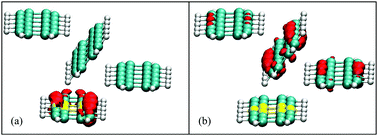Optical properties of acene molecules and pentacene crystal from the many-body Green's function method
Abstract
Acene is a type of important organic semiconductor which has promising applications in various optoelectronic devices. The fission of a singlet to triplet in it has been expected to elevate the quantum efficiency of organic solar cells. However, the quantum efficiency is still very low and the fission process is still under debate. Controversies also exist on the energies of the singlet and triplet states in acene. Using the many-body Green's function theory, which includes the GW method and Bethe–Salpeter equation (BSE), we compared the electronic excited states of several kinds of acene molecules (naphthalene to pentacene) at geometries optimized by different approaches. The energies of both the singlet and triplet depend strongly on the geometries of the molecules and their stacking. The non-negligible contribution from the resonant and anti-resonant transition coupling can cause large errors of the Tamm–Dancoff approximation, and the full BSE is required to get accurate results which are consistent with experiments. We found that accurate ionization energies and exciton energies can only be obtained when the geometries optimized by the Hartree–Fock approach are used. Singlet fission may be realized in isolated molecules, clusters, and surfaces, but it is hard in perfect pentacene crystals energetically. We provide a methodology for future research on acene-based solar cells and other optoelectronic devices.


 Please wait while we load your content...
Please wait while we load your content...